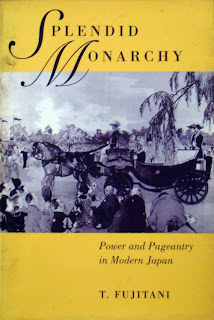Looking into the eye of a whale..... a Mountain Whale,..... which is also known as inoshishi,.... a wild boar. It was called mountain whale as a way to circumvent the proscription against eating meat. A whale is a fish and therefore exempt. Rabbits are classified as birds for the same reason.
Monks and buddhist priests, and devout buddhists, ate no meat, but most Japanese ate any meat they could get,... frog, snake, badger,.... dog was popular in Edo.
Inoshishi are classified as a pest as they destroy many gardens. My own gardens have been raided several times. Last autumn my neighbor set a trap next to one of the tracks that the boar were coming out of the forest on. In 3 months he caught 3 full-size boar.
We no longer have a hunter in our village, so a friend from another village was called and he dispatched the beast with one shot.
The tail is cut off so a small bounty can be gotten from the town council.
I have read that in parts of Japan many boars are killed as pests but the carcasses just burnt.
Round here inoshishi meat is prized, and from each one caught I got a leg and the ribs. Fresh boar meat is tender and very tasty.

I caught these little guys on the road a few years ago. They were just standing, waiting for their mom who was down in the rice paddy. Maybe one of these little cuties, a few years older, was what we ate :)













